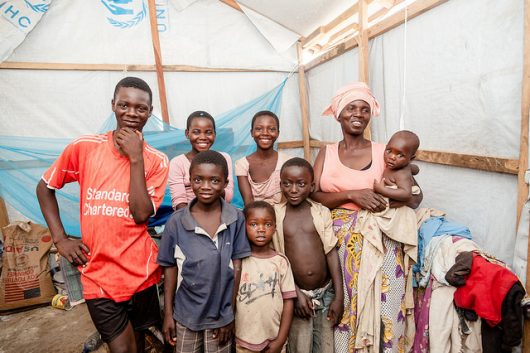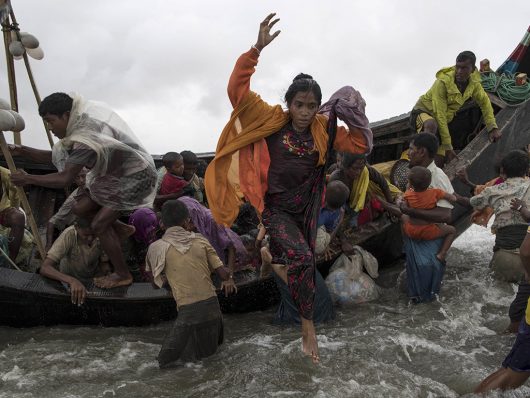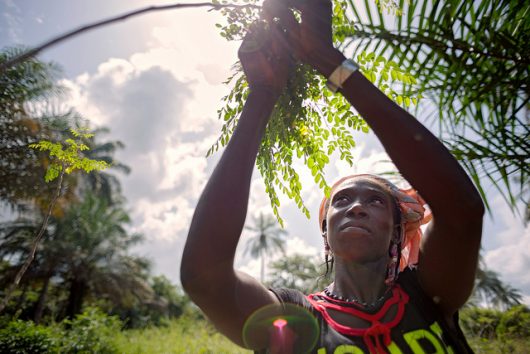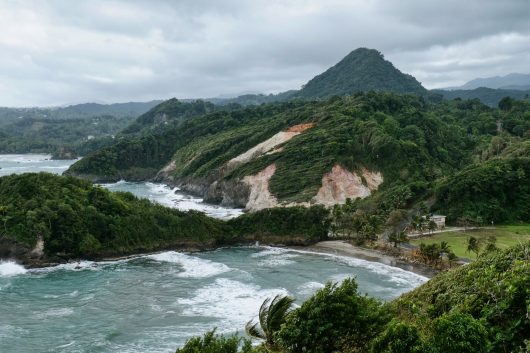
Distributing aid within areas of conflict, especially those ruled by unstable authoritarian governments, has proven to be a struggle for organizations like the United Nations. These efforts are often plagued by a myriad of issues, such as the distribution of funds to individuals by relief agencies. The Ethereum blockchain in Jordan is shifting the paradigm.
Blockchain technologies, cryptocurrencies and digital banking, however, have the potential to alleviate many of these complications. On May 31, 2017, the United Nation’s World Food Programme (WFP) completed the first successful large-scale trial of the Ethereum blockchain in Jordan to distribute humanitarian aid to Syria.
In order to fully understand the tangible effects that blockchain technology has on the lives of these individuals, it is first necessary to establish a basic background of what exactly this new platform is and what it can do.
Ethereum essentially lends itself to decentralized data recording, meaning that no single person or entity owns the final ledger. Instead, everyone who participates in the network becomes part of the record keeping process.
Blockchain, the technology behind the infamous cryptocurrency Bitcoin as well as Ethereum, has many other applications past transferring money between parties. Like Bitcoin, Ethereum acts as a distributed public blockchain network. However, while Bitcoin’s main application involves peer-to-peer exchange of payments, Ethereum blockchain focuses on both cryptocurrency, called Ether, as well as deploying decentralized applications. These applications generally contain smart contracts: computer codes that facilitate the exchange of money, content, property or anything else of value.
Ethereum offers an unprecedented capacity to carry out nonspecific applications, meaning that instead of just offering peer-to-peer transfer of digital currencies, Ethereum enables the development of potentially thousands of different applications on a single platform. Additionally, hacking and fraudulent activities are virtually impossible on a decentralized network like Ethereum.
Ethereum has many widespread applications, one of which includes legal identification. With current estimates suggesting that there are 1.1 billion people around the world with no official documentation, many of whom are refugees, aid organizations struggle to provide health, financial and educational services without proper identification.
While smartphones or Internet-capable devices are an obvious access point for the identification platform, the project implemented by the WFP was built under the assumption that its beneficiaries might not have access to such luxuries. Instead, the WFP made it possible for thousands of Syrian refugees to pay with a scan of their eyes using the Ethereum blockchain in Jordan.
In this month-long trial, instead of administering funds directly to the recipients, the WFP issued unspecified amounts of cryptocurrency-based vouchers to thousands of Syrian refugees. The U.N. allocated money to the merchants of participating stores where the coupons could be redeemed, effectively cutting out the banking middlemen in the aid distribution processes. Iris recognition devices verified the identities of the refugees at the supermarket in the Azraq camp in Jordan and deducted what they spent from the total sum the WFP provided.
By the end of May 2017, the Ethereum blockchain in Jordan was successfully used to record and authenticate transfers to about 10,000 individuals. WFP consultant Alexandra Alden helped oversee the implementation of this project and stated, “All funds received by the refugees from WFP were specifically used to purchase food items such as olive oil, pasta, and lentils.”
The Future of Ethereum Blockchain in Jordan and Beyond
In terms of future expansion, the WFP intends to include upwards of 100,000 individuals in Jordan in the program as early as August 2017, with hopes of serving the entire Jordanian refugee population by the end of 2018. If this expansion proves successful, the agency will look to expand beyond Jordan to other countries in need of aid.
Additionally, companies including Accenture and Microsoft have been working to design a more comprehensive digital ID network for the U.N. using blockchain technology.
Instead of just receiving food from local merchants, this identification network will provide undocumented refugees with unique identifiers called “stamps” that authenticate services received at camps or through other agencies, such as vaccinations. This system of record keeping will be tested in the near future.
While blockchain technology has the potential to serve the rest of society in various capacities, Ethereum offers those individuals who have been forced to renounce their identities over and over again the possibility of retaining important parts of who they are.
– Richa Bijlani
Photo: Flickr

 The Rohingya are the most persecuted people in the world. The population has lived in Myanmar for centuries, but the government continues to view the people as illegal immigrants. Across the border, Bangladesh believes the group is Burmese. Thus, the population is stateless.
The Rohingya are the most persecuted people in the world. The population has lived in Myanmar for centuries, but the government continues to view the people as illegal immigrants. Across the border, Bangladesh believes the group is Burmese. Thus, the population is stateless. Not only do refugees lack a stable place to call home, many also lack access to education. For
Not only do refugees lack a stable place to call home, many also lack access to education. For  The International Rescue Committee and Sesame Workshop both provide support and
The International Rescue Committee and Sesame Workshop both provide support and  Kalobeyei is a town located in the northwestern part of
Kalobeyei is a town located in the northwestern part of  Oman is a coastal nation that sits on the Arabian Peninsula, south of Saudi Arabia and east of
Oman is a coastal nation that sits on the Arabian Peninsula, south of Saudi Arabia and east of 
 Nations such as the Commonwealth of Dominica, and in the Caribbean in general, have become increasingly popular for those seeking asylum throughout the world, demanding an understanding of refugees throughout Caribbean nations. Here on ten facts about Dominican refugees.
Nations such as the Commonwealth of Dominica, and in the Caribbean in general, have become increasingly popular for those seeking asylum throughout the world, demanding an understanding of refugees throughout Caribbean nations. Here on ten facts about Dominican refugees.
